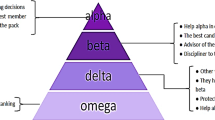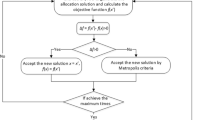Abstract
We consider the problem of real-life evacuation of people at sea. The primary disaster response goal is to minimize the time to save all the people during the evacuation operation, taking into account different groups at risk (children, women, seniors etc.) and the evacuation processing time (including the routing time), subject to a budget constraint. There are different evacuation tools (e.g., lifeboats, salvage ships, sea robots, helicopters etc.) for rescuing groups at risk to some safe points (e.g., hospitals, other ships, police offices etc.). The evacuation processing time of a group at risk depends on the group and the evacuation tool used. The secondary goal is to minimize the cost among all the alternative optimal solutions for the primary goal. We present a new mathematical rescue-evacuation model and design a fast solution method for real-time emergency response for different population groups and different evacuation tools, based on iterative utilization of a modification of the scheduling algorithm introduced by Leung and Ng (Eur J Oper Res 260:507–513, 2017).

Similar content being viewed by others
References
FCCA, Florida-Caribbean Cruise Association. (2018). Cruise industry overview 2018: State of the cruise industry. Florida: Pembroke Pines.
IMO, International Marine Organization. (2002). Interim Guidelines for Evacuation Analysis of New and Existing Passengers Ships. MSC/Circ.1033, June 2002.
Mishra, D., Kumar, S., & Hassini, E. (2019). Current trends in disaster management simulation modelling research. Annals of Operations Research, 283(1–2), 1387–1411.
Duhamel, C., Santos, A. C., Brasil, D., Châtelet, E., & Birregah, B. (2016). Connecting a population dynamic model with a multi-period location-allocation problem for post-disaster relief operations. Annals of Operations Research, 247(2), 693–713.
Pyakurel, U., & Dhamala, T. N. (2017). Continuous dynamic contraflow approach for evacuation planning. Annals of Operations Research, 253(1), 573–598.
Akbari, A., Pelot, R., & Eiselt, H. A. (2018). A modular capacitated multi-objective model for locating maritime search and rescue vessels. Annals of Operations Research, 267(1–2), 3–28.
Bakuli, D. L., & Smith, J. M. (1996). Resource allocation state emergency evacuation networks. European Journal of Operational Research, 89, 543–553.
Lee, D., Kim, H., Park, J.-H., & Park, B. J. (2003). The current status and future issues in human evacuation from ships. Safety Science, 41, 861–876.
Vassalos, D. (2006). Passenger ship safety: Containing the risk. Marine Technology, 43(4), 203–212.
Bendel, J., & Klüpfel, H. (2011). Accessibility and evacuation planning—similarities and differences. In R. Peacock, E. Kuligowski & J. Averill (Eds.), Pedestrian and evacuation dynamics (pp. 701–712). Boston, MA: Springer.
Chu, C. W., Lu, H. A., & Pan, C. Z. (2013). Emergency evacuation route for the passenger ship. Journal of Marine Science and Technology, 21(5), 515–521.
Cuesta, A., Alvear, D., Abreu, D., & Silio, D. (2014). Real-time stochastic evacuation models for decision support in actual emergencies. In Proceedings of the 11th international symposium on fire safety science (SFSS-14), February 2014, University of Canterbury Press, New Zealand (pp. 10–14).
Leung, J. Y.-T., & Ng, C. T. (2017). Fast approximation algorithms for uniform machine scheduling with processing set restrictions. European Journal of Opererational Research, 260, 507–513.
Choi, W., Hamacher, H. W., & Tufecki, S. (1988). Modeling of building evacuation problems by network flows with constraints. European Journal of Operational Research, 35, 98–110.
Hamacher, H. W., & Tjandra, S. A. (2002). Mathematical modeling of evacuation problems: A state of the art. In M. Schreckenberg & S. D. Sharma (Eds.), Pedestrian and evacuation dynamics (pp. 227–266). Berlin: Springer-Verlag.
Hoppe, B., & Tardos, E. (1994). Polynomial time algorithms for some evacuation problems. In Proceedings of the 5th annual ACM-SIAM symposium on discrete algorithms (pp. 433–441).
Luh, P. B., Wilkie, C. T., Chang, S.-C., Marsh, K. L., & Olderman, N. (2012). Modeling and optimization of building emergency evacuation considering blocking effects on crowd movement. IEEE Transactions on Automation Science and Engineering, 9(4), 687–700.
Osman, M. S., & Ram, B. (2013). Two-phase evacuation route planning approach using combined path networks for building and roads. Computers & Industrial Engineering, 65(2), 233–245.
Togawa, K. (1955). Study of Fire Escapes Basing on the Observation of Multitude Currents, Report No. 14. Building Research Institute, Ministry of Construction, Tokyo.
M. Miah, “Survey of data mining methods in emergency evacuation planning”. Proceedings of the Conference for Information Systems Applied Research (CONISAR 2011), Wilmington North Carolina, USA, 2011.
Hoffmann, P., Höferlin, M., Kirstädter, A., & Weiskopf, D. (2013). Dynamic evacuation planning by visual analytics—An expert survey. In SIGRAD 2013.
Francis, R. L., & Kisko, T. M. (1985). EVACNET+: A computer program to determine optimal building evacuation plans. Fire Safety Journal, 9, 211–220.
Yuan, Y., & Wang, D. (2009). Path selection model and algorithm for emergency logistics management. Computers & Industrial Engineering, 56(3), 1081–1094.
Caunhye, A. M., Nie, X., & Pokharel, A. (2012). Optimization models in emergency logistics: A literature review. Socio-Economic Planning Science, 46(1), 4–13.
Elalouf, A., Levner, E., & Cheng, T. C. E. (2013). Routing and dispatching of mobile agents in integrated enterprises. International Journal of Production Economics, 145(1), 96–106.
Desmet, A., & Gelenbe, E. (2013). Graph and analytical models for emergency evacuation. Future Internet, 5, 46–55.
Tang, H., Elalouf, A., Levner, E., & Cheng, T. C. E. (2014). Efficient computation of evacuation routes on a three-dimensional geometric network. Computers & Industrial Engineering, 76, 231–242.
Ng, C. T., Cheng, T. C. E., Elalouf, A., & Levner, E. (2015). Design and analysis of a fast approximation algorithm for multi-modal emergency evacuation routes in the 3D environment. In D. Chan (Ed.), Environmental science and information application technology (pp. 307–312). Boca Raton: CRC Press.
Kriheli, B., Levner, E., Cheng, T. C. E., & Ng, C. T. (2017). Scheduling of rescue operations with overlooking within short response time: An approach for quick response to urgent relief demand. International Journal of Advances in Electronics and Computer Science, 4(11), 36–39.
Acknowledgements
We thank two anonymous referees for their helpful comments on earlier versions of our paper. This research was supported in part by the Research Grants Council of Hong Kong under Grant Numbers PolyU 152148/15E and PolyU 152207/17E.
Author information
Authors and Affiliations
Corresponding author
Additional information
Publisher's Note
Springer Nature remains neutral with regard to jurisdictional claims in published maps and institutional affiliations.
Rights and permissions
About this article
Cite this article
Ng, C.T., Cheng, T.C.E., Levner, E. et al. Optimal bi-criterion planning of rescue and evacuation operations for marine accidents using an iterative scheduling algorithm. Ann Oper Res 296, 407–420 (2021). https://doi.org/10.1007/s10479-020-03632-6
Published:
Issue Date:
DOI: https://doi.org/10.1007/s10479-020-03632-6




